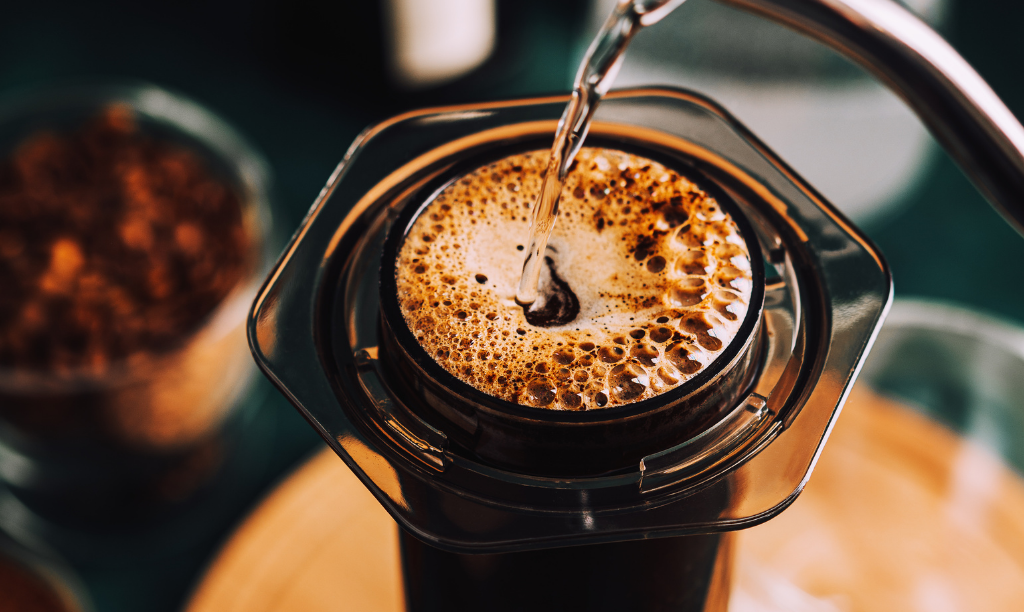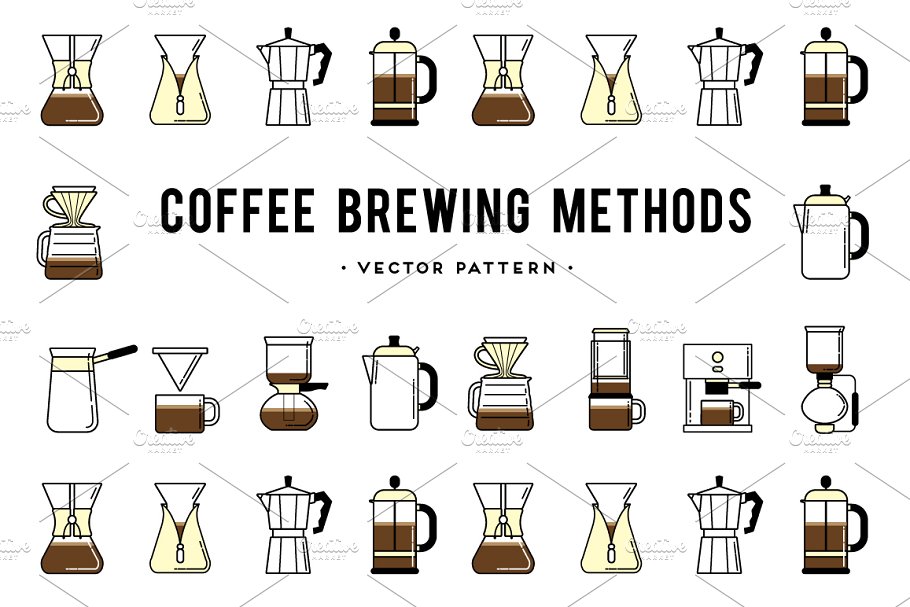Coffee Brewing Methods: Opening the Keys to the Perfect Mug in your home
Coffee Brewing Methods: Opening the Keys to the Perfect Mug in your home
Blog Article
The Scientific Research Behind Coffee Developing: Just How Temperature and Time Affect Your Drink
Recognizing the scientific research behind coffee developing exposes that temperature level and time are not simple variables however crucial components that determine the beverage's flavor account and total top quality. The optimum developing temperature level generally falls in between 195 ° F and 205 ° F, while the period of removal varies dramatically throughout different methods. This interplay of variables can result in a cup that is either fascinating or frustrating. As we discover the nuances of these elements, the question emerges: exactly how can one properly equilibrium temperature and time to attain that excellent mixture?
The Chemistry of Coffee Removal
The chemistry of coffee removal looks into the detailed processes that change raw coffee beans into the fragrant beverage appreciated worldwide. This improvement primarily entails the solubility of various compounds existing in the beans, which are influenced by aspects such as grind size, water top quality, and the developing technique used.
During the brewing procedure, hot water serves as a solvent, removing soluble compounds, consisting of caffeine, acids, sugars, and lipids, from the coffee grounds. Each substance adds to the flavor profile, fragrance, and body of the final drink. Acids are liable for bright and appetizing notes, while oils contribute to an abundant mouthfeel.
The removal process is not uniform; different substances liquify at different rates. The preliminary stages of developing remove acids and sugars, causing a positive acidity, while prolonged extraction can result in resentment due to over-extraction of undesirable compounds. Comprehending these chemical communications is critical for optimizing brewing methods, as the equilibrium in between extraction time and water temperature can substantially influence the overall quality of the coffee. Ultimately, mastering the chemistry of coffee extraction is key to accomplishing a all-round and delicious mug.
Suitable Brewing Temperatures
Locating the appropriate developing temperature is important for unlocking the complete capacity of coffee flavors and fragrances - coffee brewing methods. Study shows that the optimal array for developing coffee lies in between 195 ° F to 205 ° F(90 ° C to 96 ° C) Within this array, the extraction procedure successfully dissolves the preferable soluble substances in coffee beans, causing a tasty and balanced cup
Brewing at reduced temperatures, such as listed below 195 ° F(90 ° C ), may cause under-extraction, generating an acidic and weak brew with low-key flavors. Alternatively, brewing at temperatures going beyond 205 ° F(96 ° C) can result in over-extraction, generating a bitter and rough preference because of the excessive dissolution of unwanted compounds, such as tannins.
In addition, the optimal developing temperature can vary depending upon the coffee bean kind and roast level. For example, lighter roasts typically profit from somewhat greater temperatures to boost their complex flavor accounts, while darker roasts may be much better suited to lower temperature levels to mitigate resentment.
Inevitably, keeping accuracy in brewing temperature levels is critical for achieving a harmonious balance of flavors, making sure that every cup of coffee provides a gratifying sensory experience.
Influence of Developing Time
Developing time plays an essential function in identifying the flavor account and general quality of coffee. Shorter developing times can result in under-extraction, leading to a weak or sour flavor, as not enough soluble substances are dissolved.
Optimal developing time differs depending upon the method made use of and the grind dimension of the coffee. As an example, a French press typically calls for regarding four mins, while espresso removal is generally completed within 25 to 30 secs. It is necessary to adjust brewing time in combination with other variables, such as water temperature level and coffee-to-water ratio, to achieve the wanted flavor account.
Understanding the impact of developing time allows coffee fanatics to fine-tune their developing strategies, eventually boosting the sensory experience of their cup (coffee brewing methods). With mindful attention to this variable, one can open the complete capacity of the coffee, disclosing its special qualities and nuances
Brewing Approaches and Their Effects

For example, approaches like French press and cold brew permit a much longer steeping time, causing a fuller body and durable flavor because of raised removal of oils and soluble solids. Conversely, espresso brewing utilizes high stress and a shorter extraction time, creating a focused shot that highlights intense tastes and a rich crema.
Pour-over methods, such as Chemex or V60, supply an even more regulated removal procedure, permitting the maker to manipulate flow rate and water circulation, which can boost illumination and quality. At the investigate this site same time, percolation techniques cycle water try this out via the coffee premises several times, causing a stronger, frequently bitter taste.
Lastly, the usage of paper filters versus metal filters can additionally influence the last taste; paper filters generally generate a cleaner mug by trapping oils and fine fragments, while metal filters allow even more oils to go through, adding to a fuller mouthfeel - coffee brewing methods. Understanding these subtleties can boost the coffee experience substantially
Tips for Developing Your Mixture
A well-executed mixture can transform also the most basic coffee right into an impressive experience. Grind the beans just prior to brewing to maximize quality, ensuring the grind size matches your developing method-- coarser for French press and finer for coffee.
Water quality plays an essential function; usage filtered water devoid of contaminations. The perfect brewing temperature level varies between 195 ° F and 205 ° F(90 ° C to 96 ° C ) As well hot can blister the coffee, while also amazing might under-extract flavors.
Timing is similarly vital. For immersion techniques, soaking for 3 to five minutes is ideal, whereas drip approaches usually take about five minutes. Explore mixture times to find your preferred stamina.

Conclusion
In summary, the detailed partnership in between temperature level and time is critical in the coffee developing procedure. Adhering to optimal brewing temperatures between 195 ° F and 205 ° F, alongside specific timing tailored to each method, ensures the preferred flavor profile is accomplished. Comprehending these scientific concepts equips individuals to fine-tune their brewing strategies, ultimately leading to a more enjoyable and well balanced coffee experience. Mastery of these elements is vital for any type of coffee enthusiast looking for quality in their beverage.
Understanding the scientific research behind coffee brewing discloses that temperature level and time are Clicking Here not mere variables but pivotal components that dictate the drink's flavor account and general quality. Recognizing these chemical interactions is critical for optimizing developing techniques, as the equilibrium between extraction time and water temperature level can considerably affect the general top quality of the coffee.Brewing time plays a crucial function in figuring out the taste profile and general quality of coffee. By concentrating on these elements-- bean high quality, grind dimension, water temperature level, steeping time, and ratio-- you can raise your coffee developing procedure, resulting in a consistently exceptional cup.
In summary, the detailed relationship between temperature level and time is paramount in the coffee developing process.
Report this page